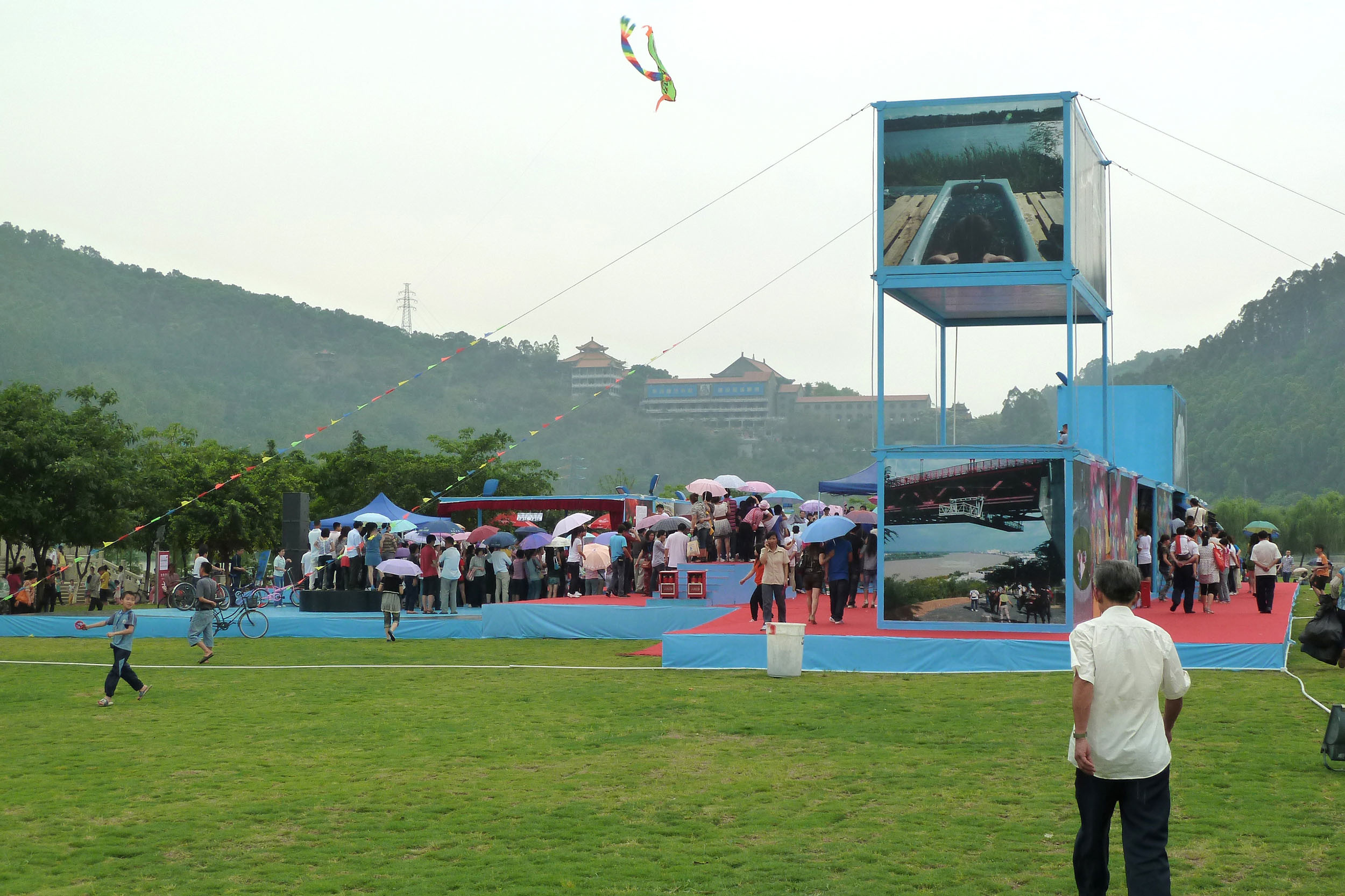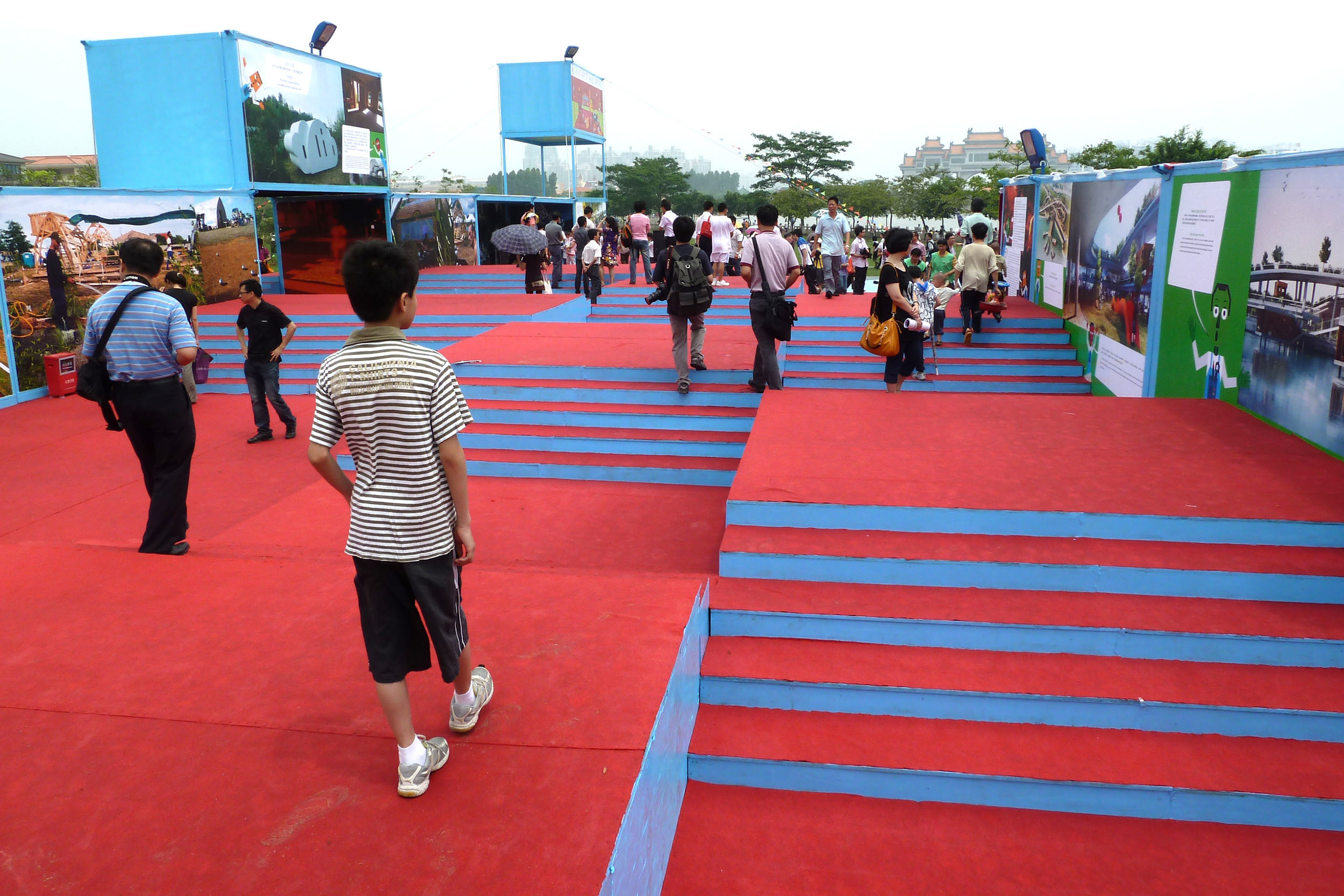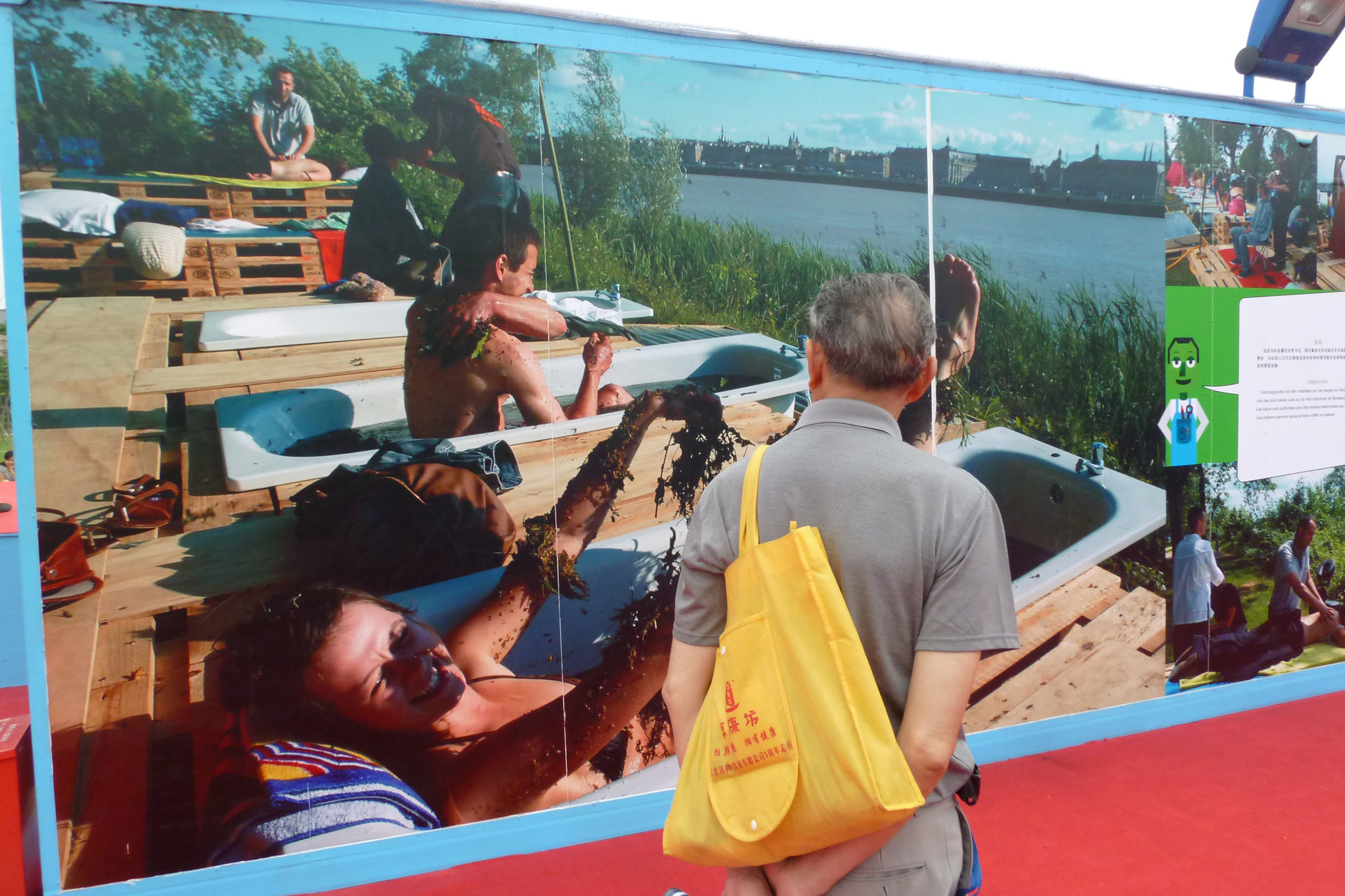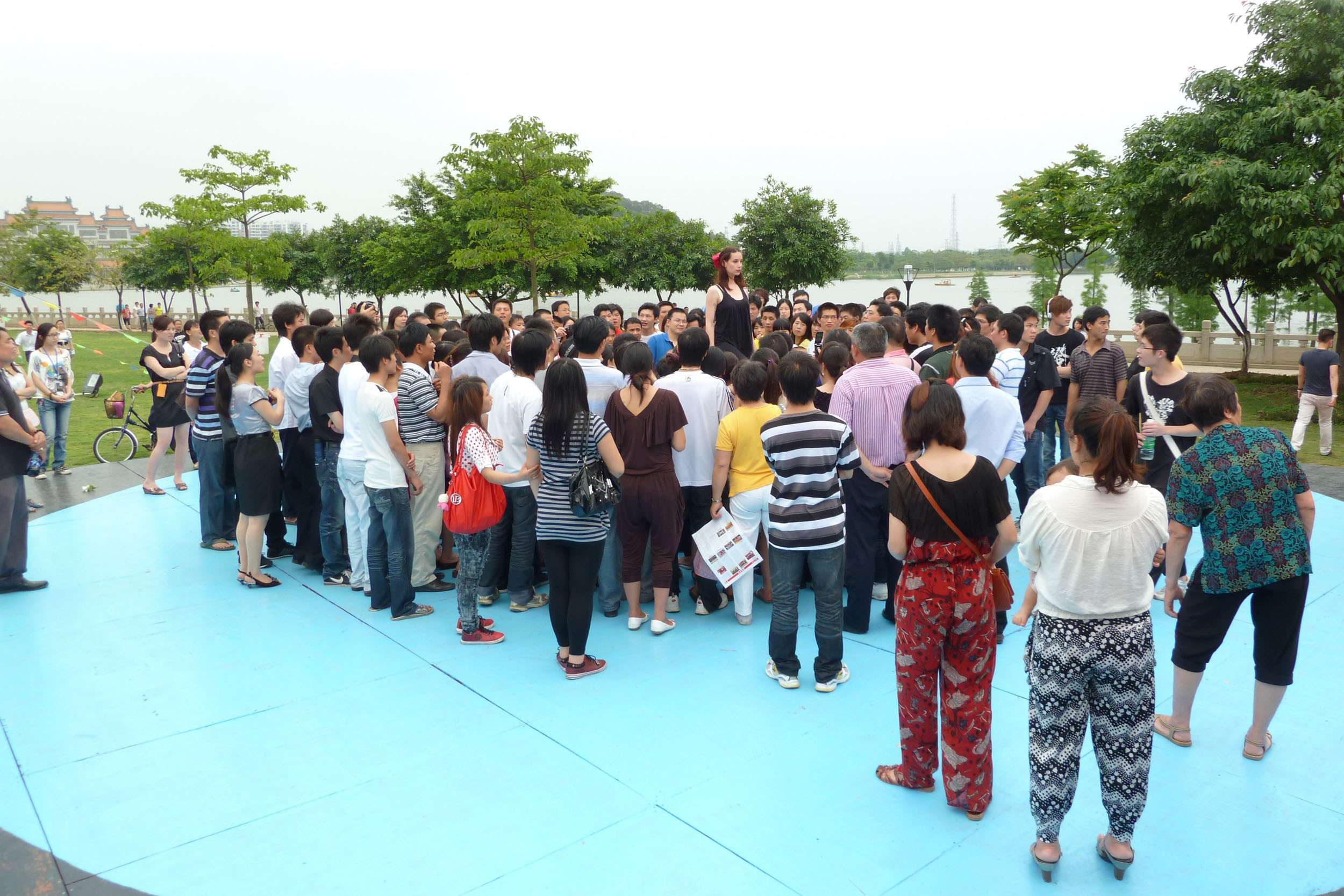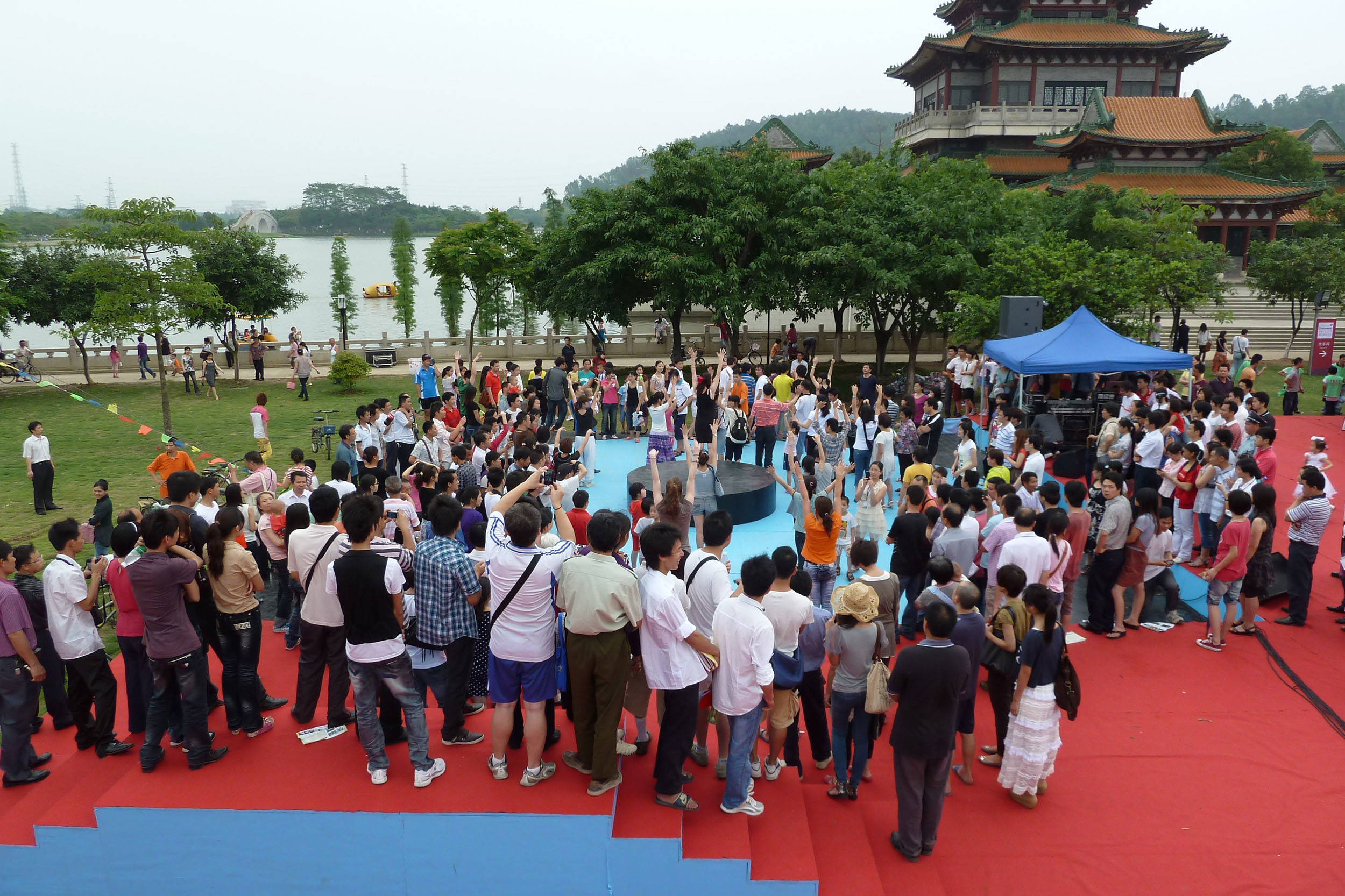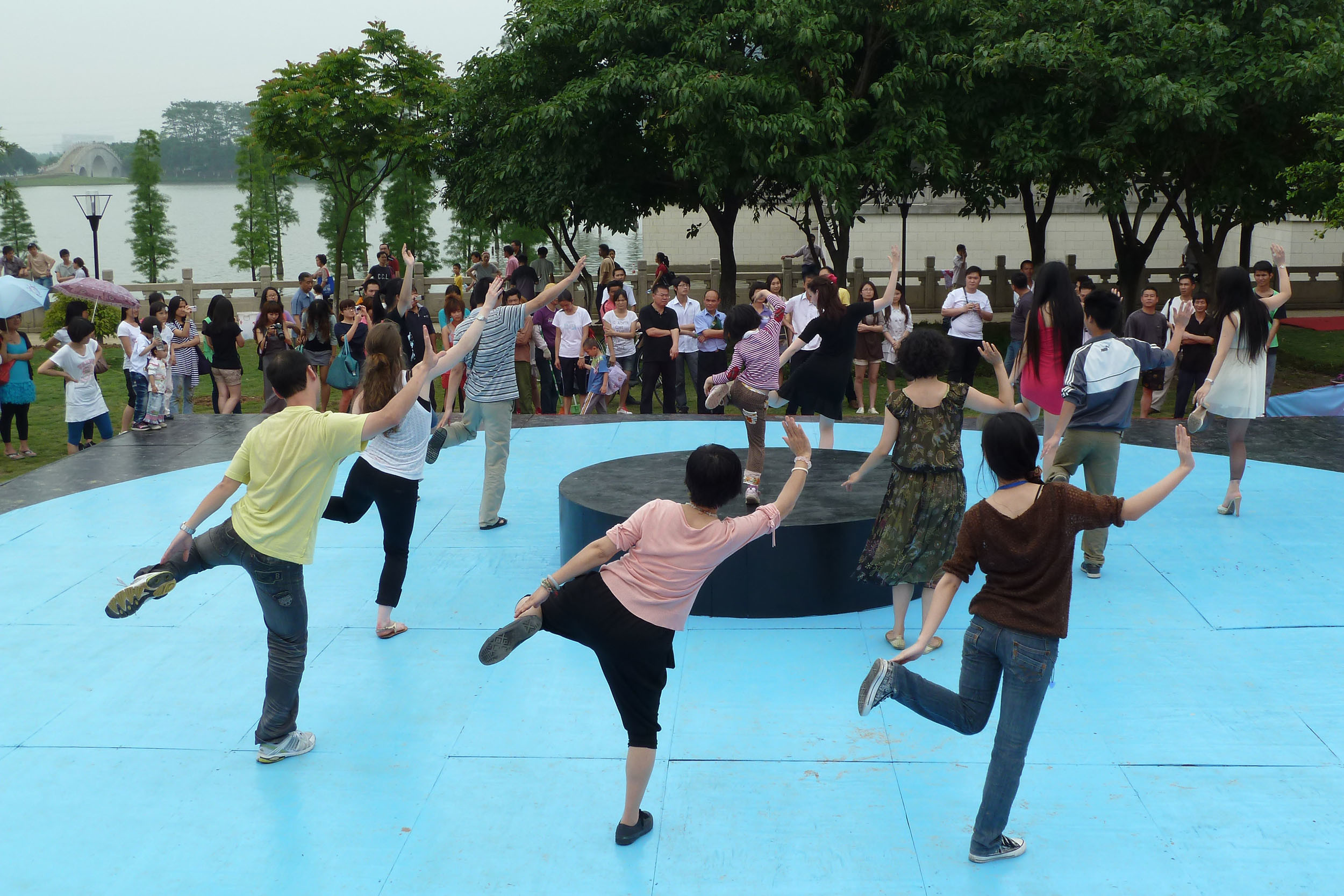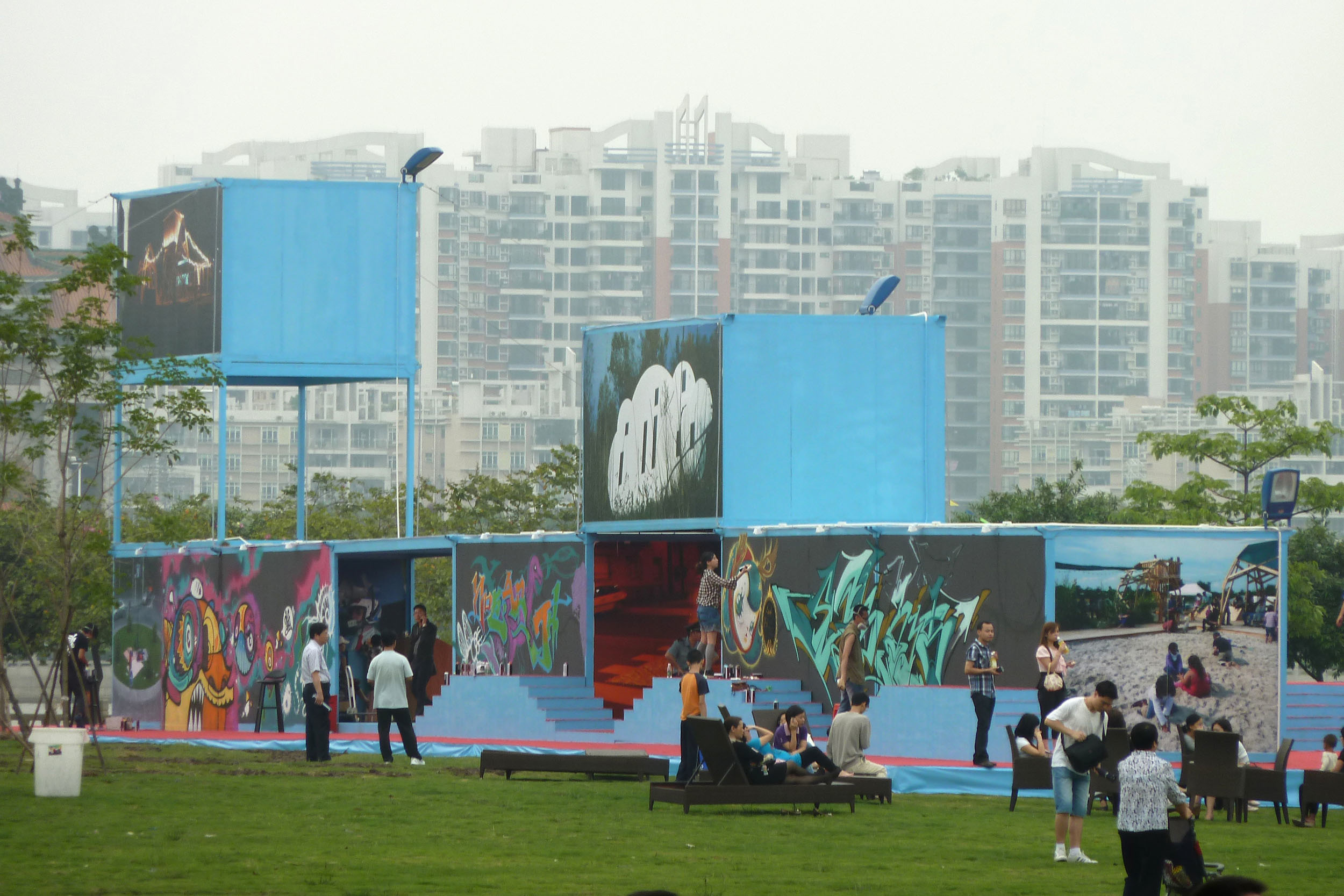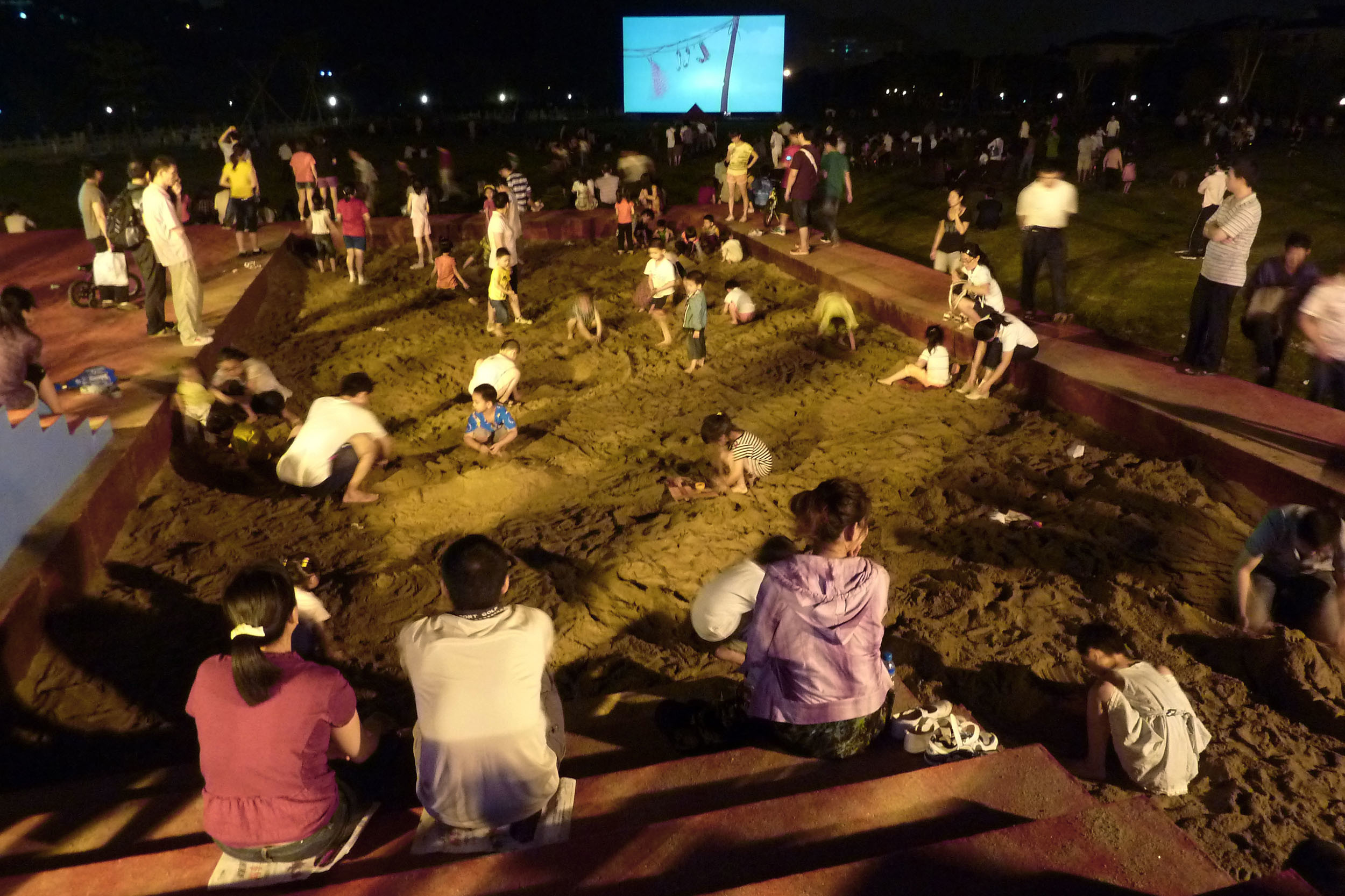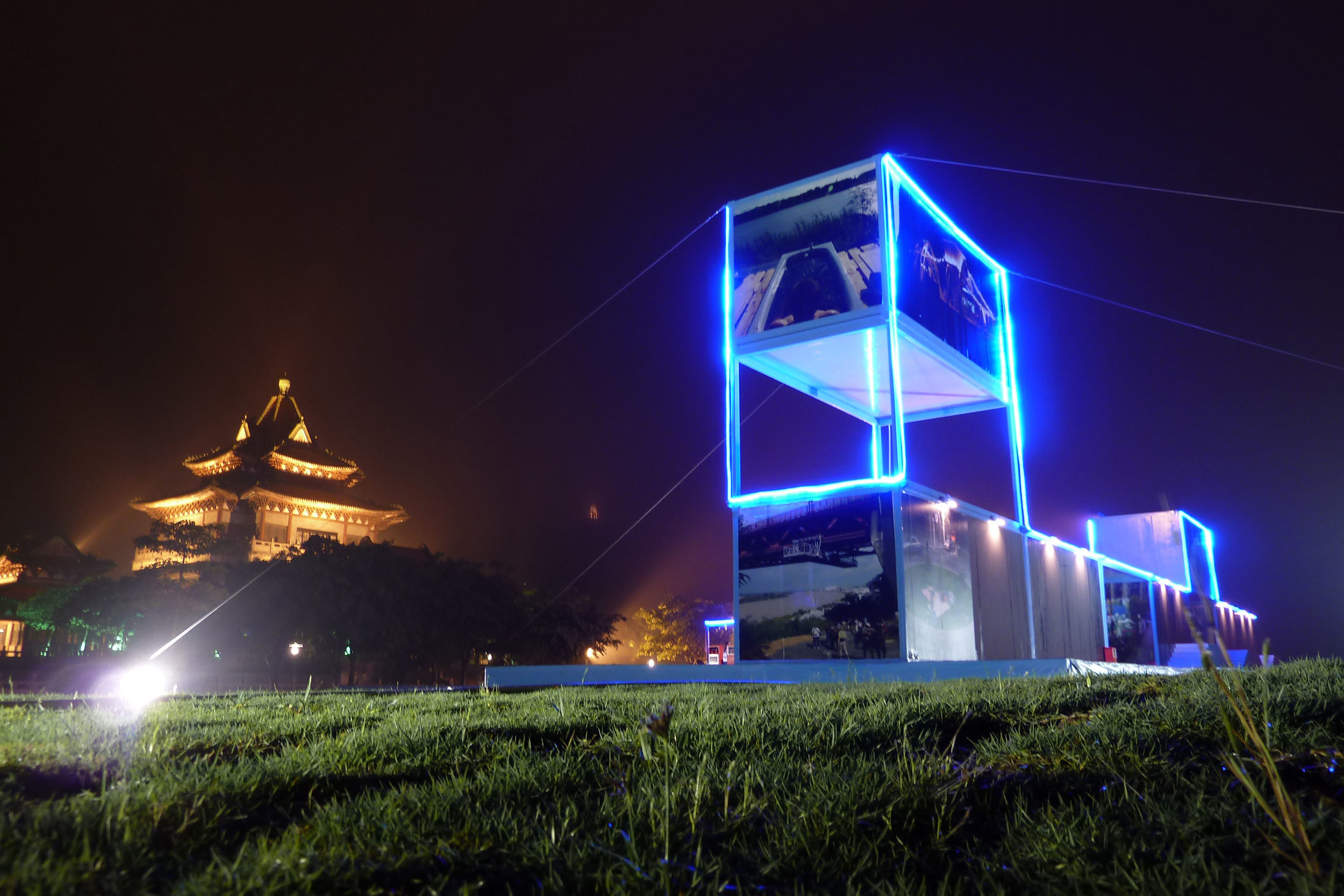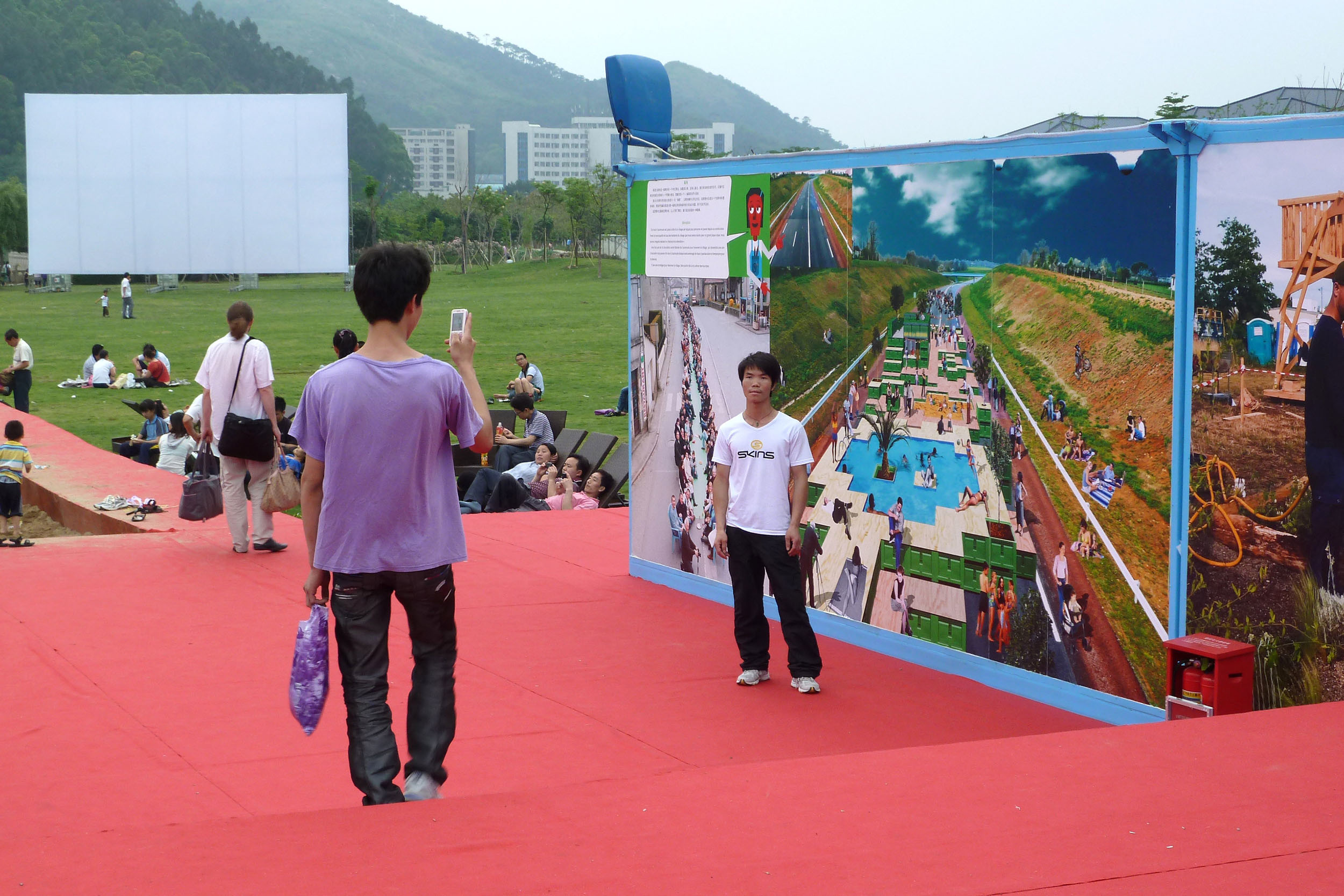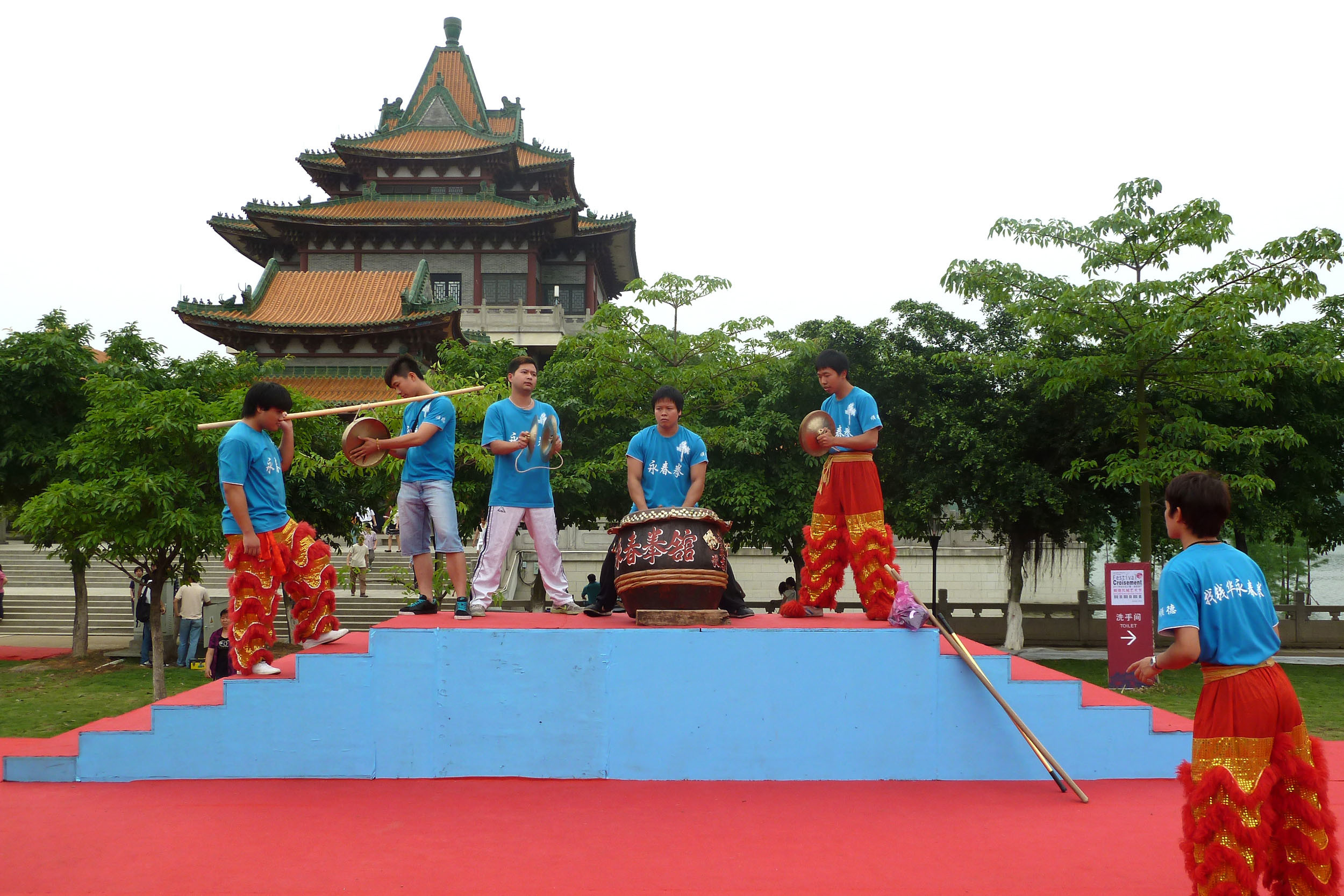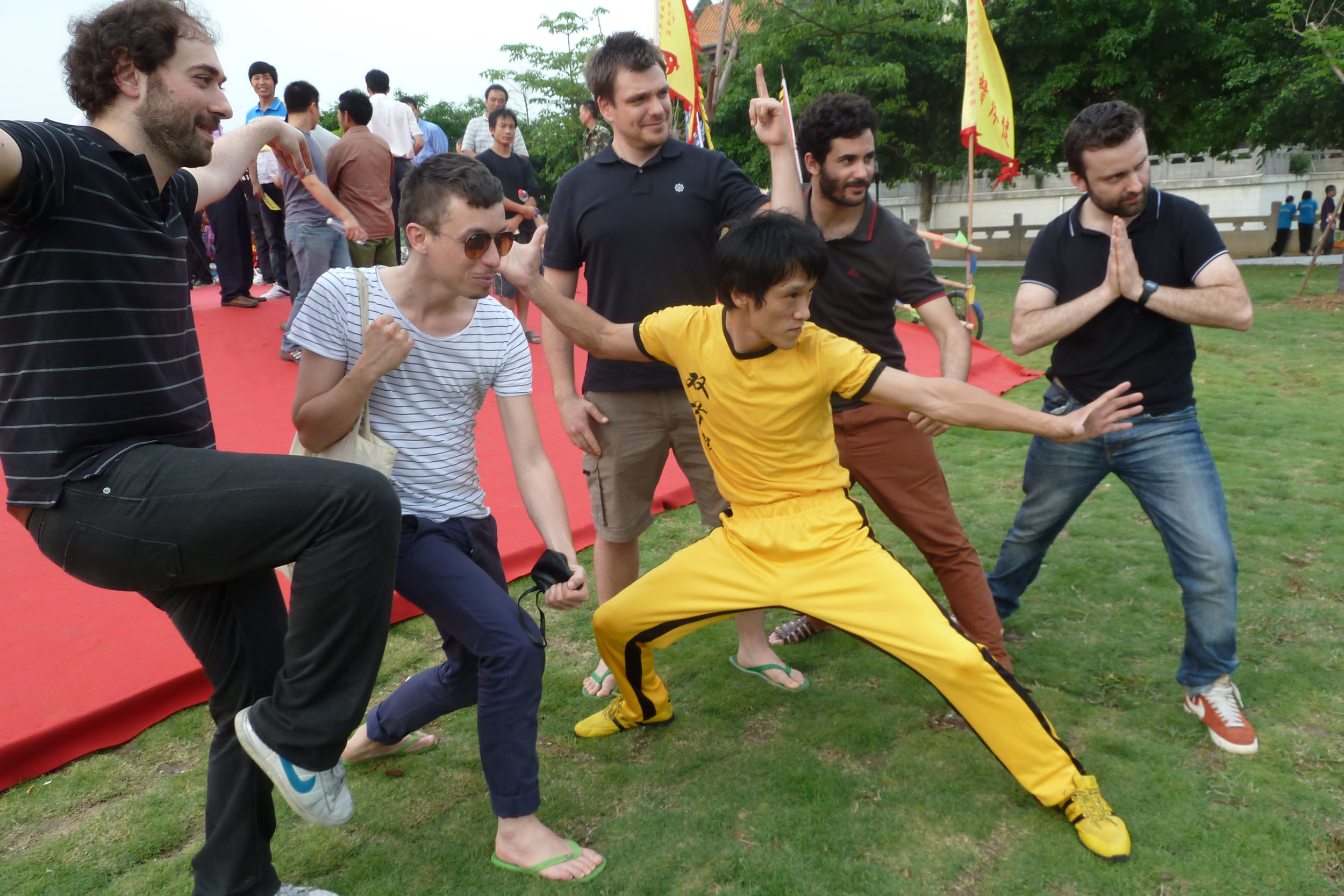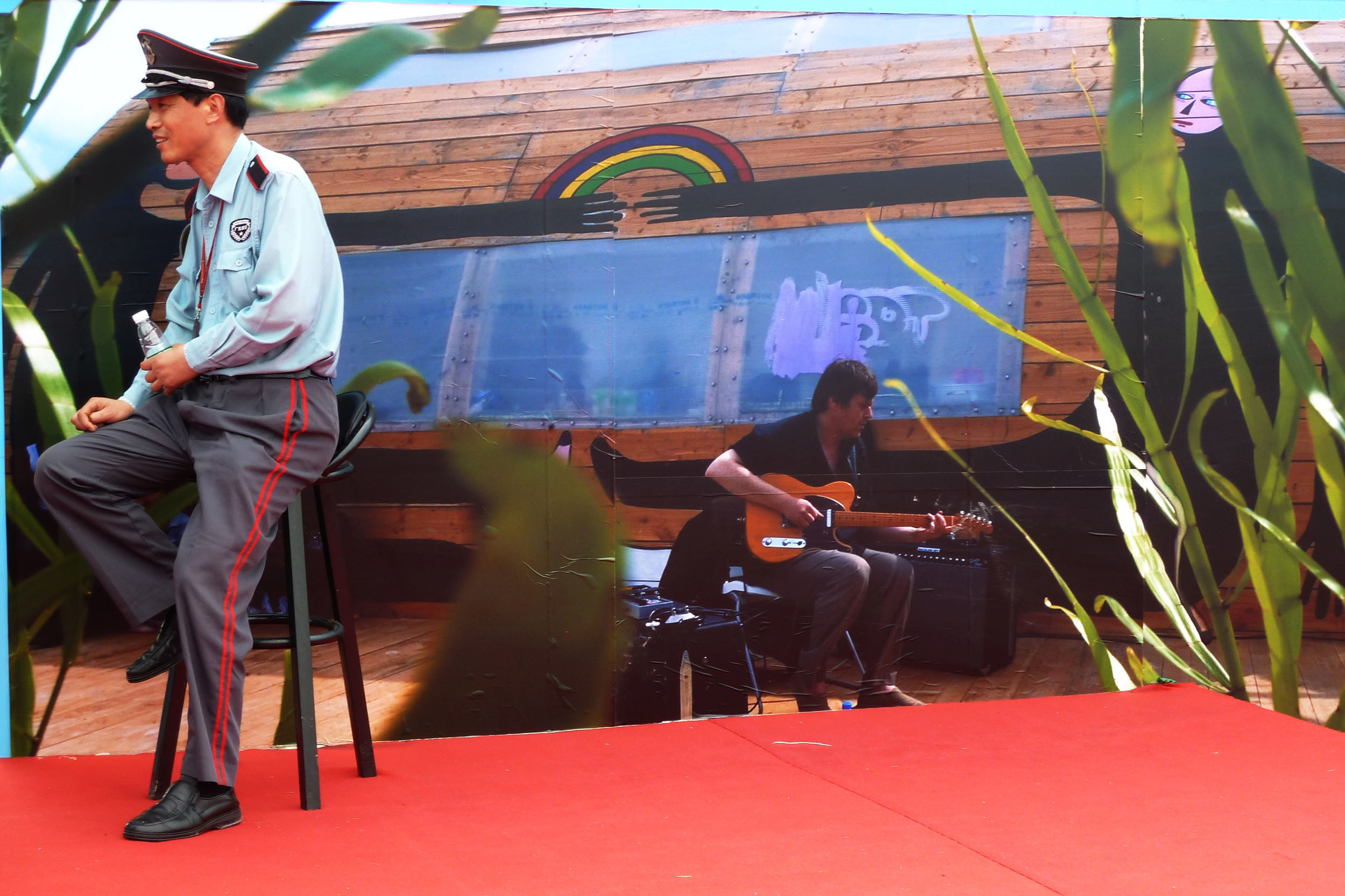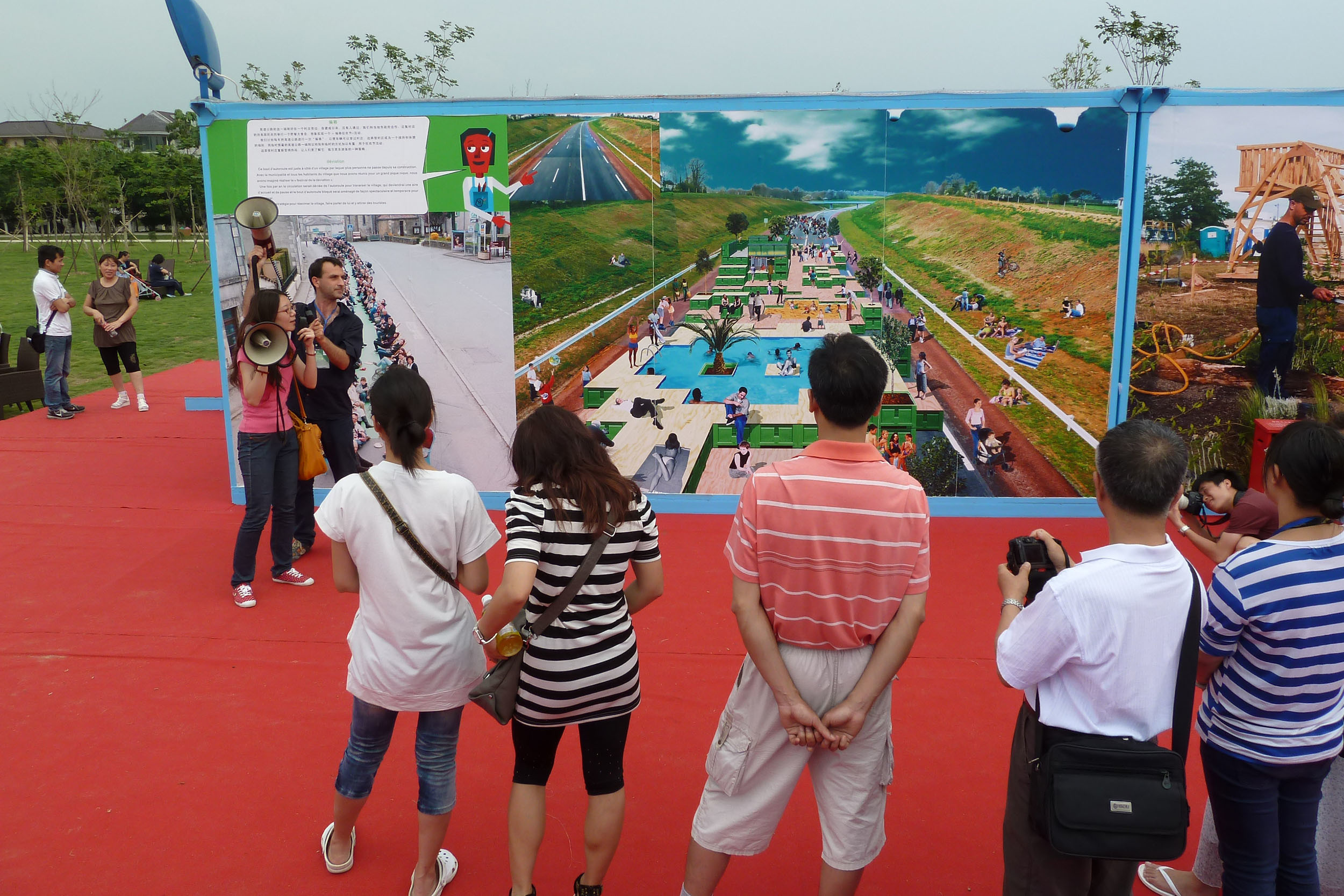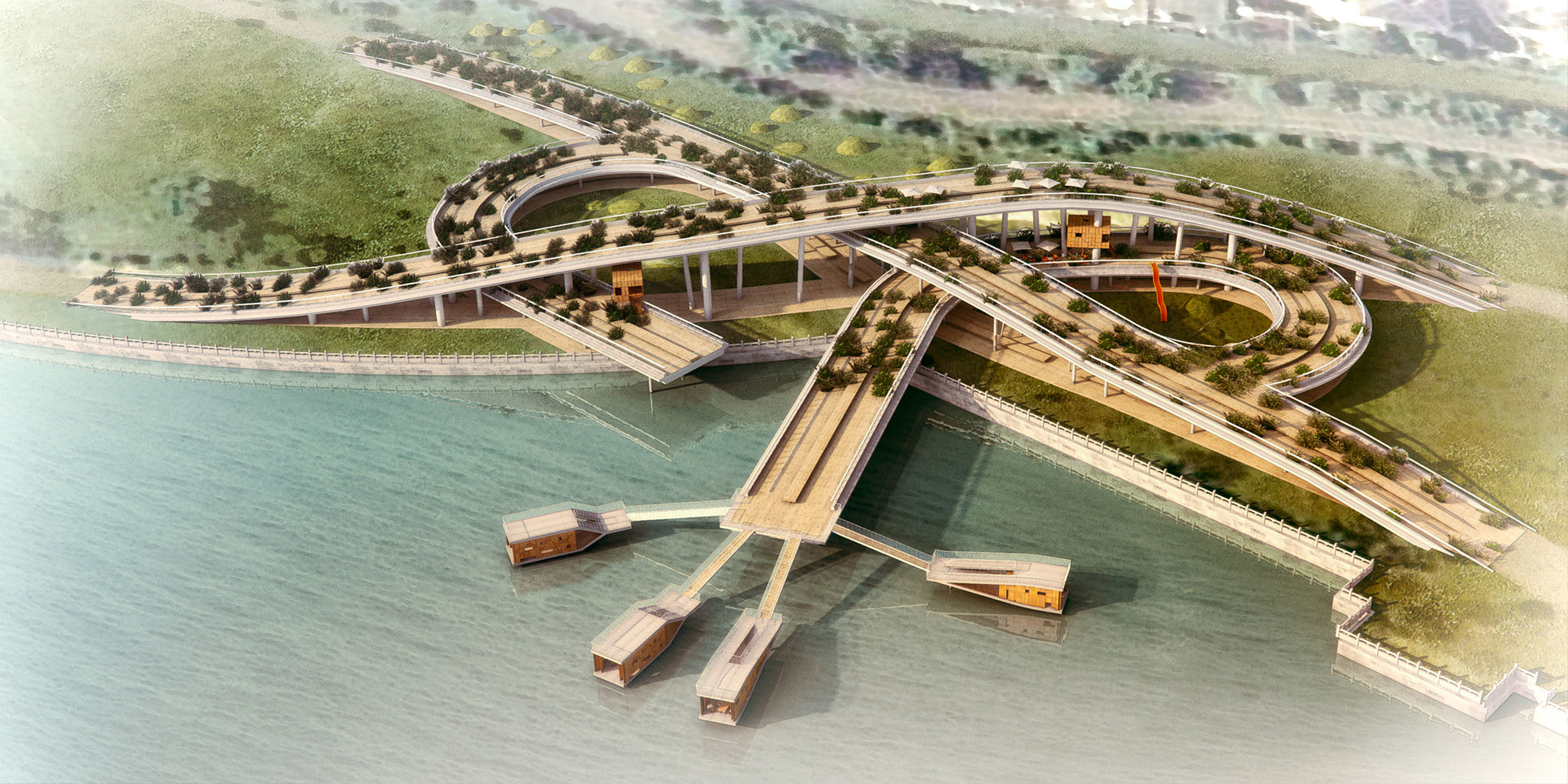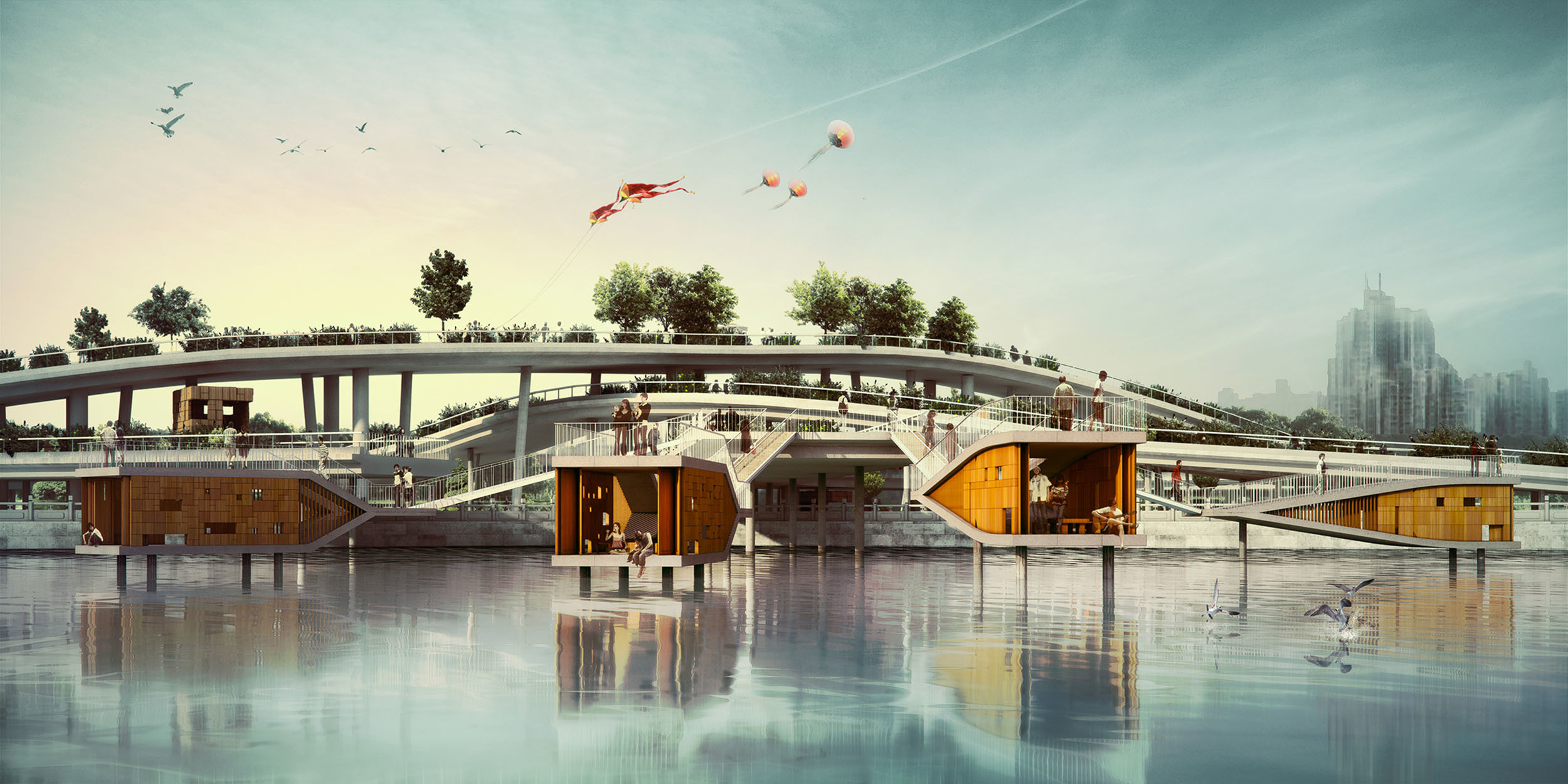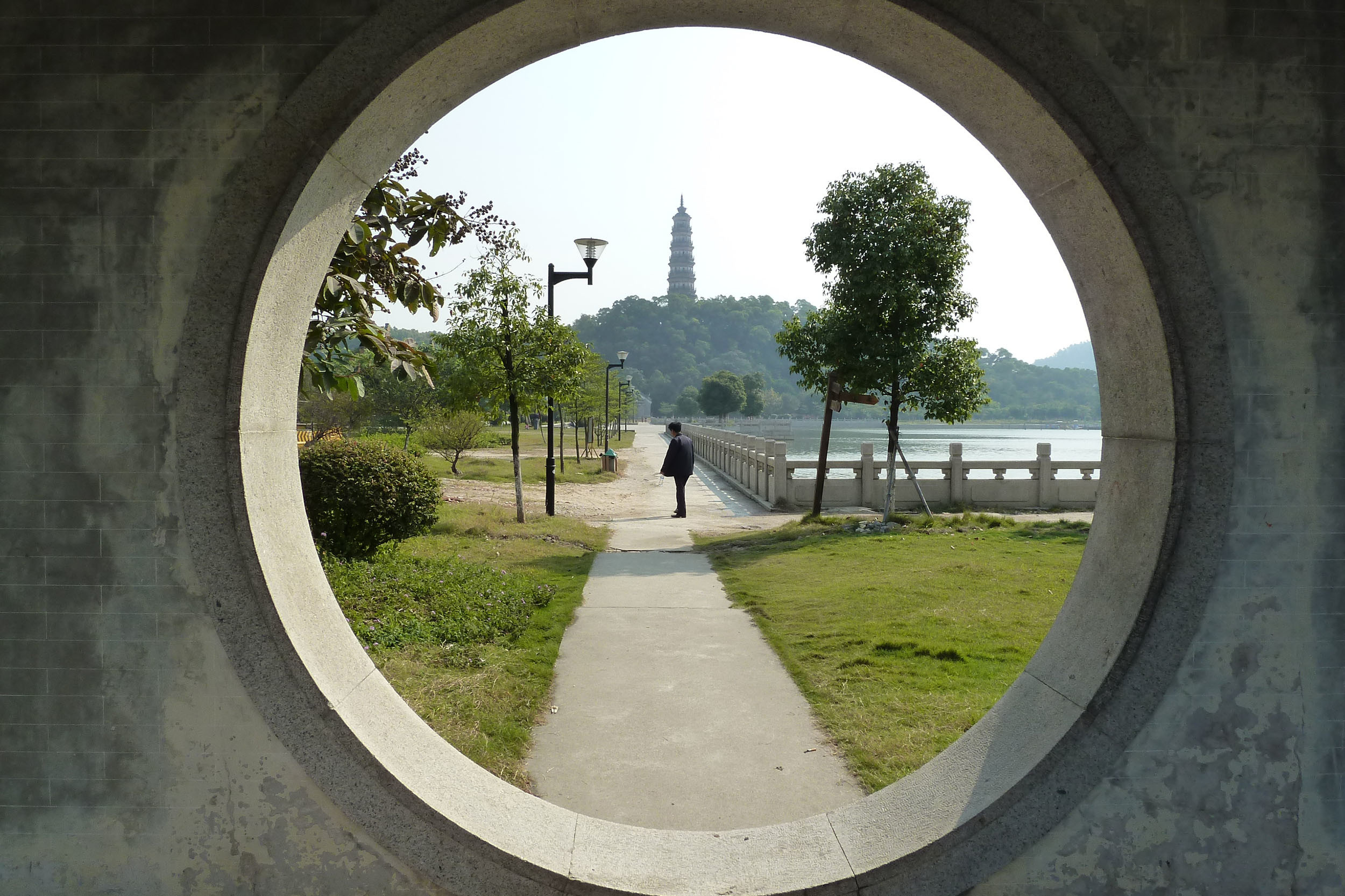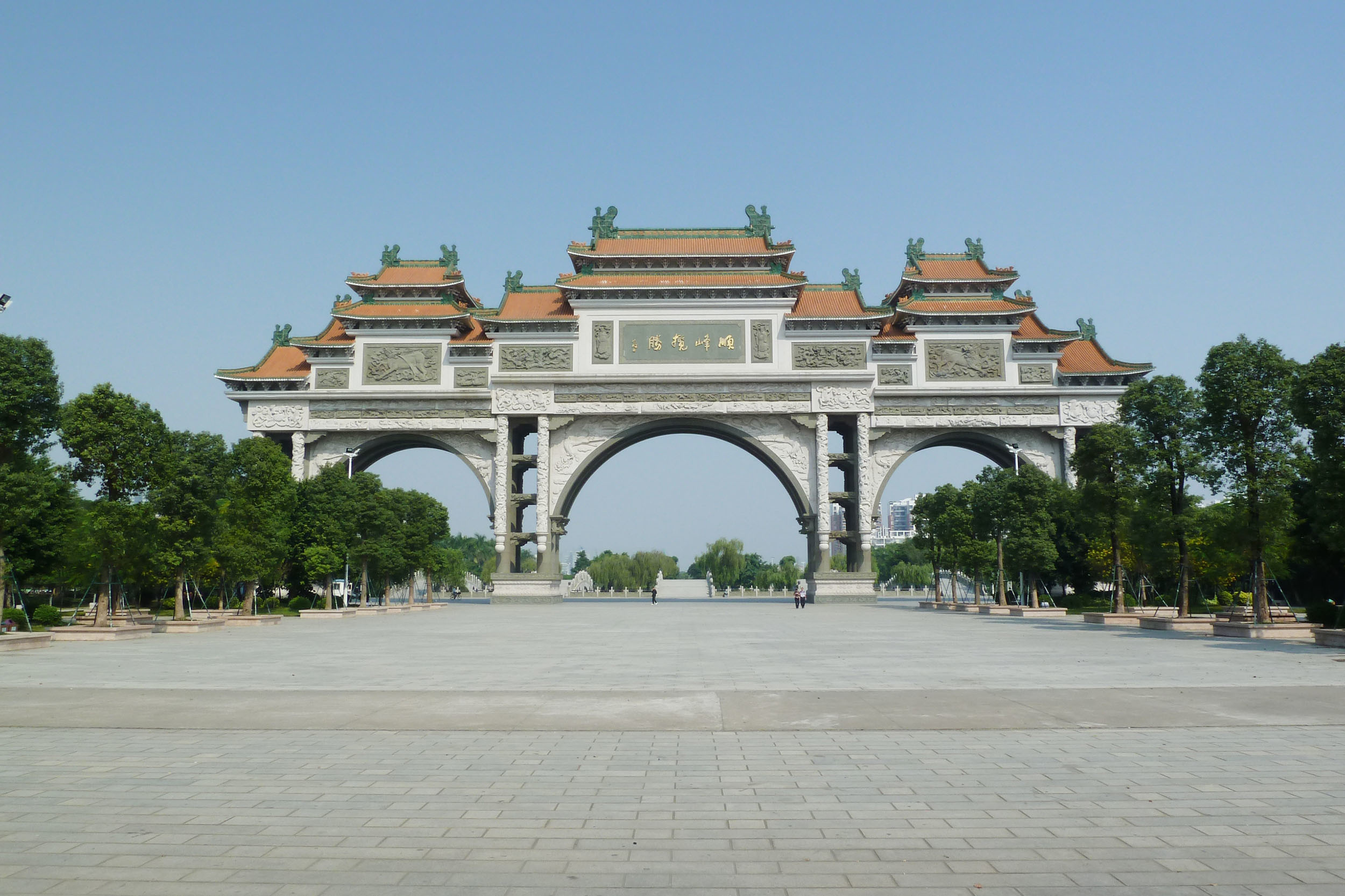
May 2011
Guinguette Shunfeng
Shunfeng Park
Shunde
China
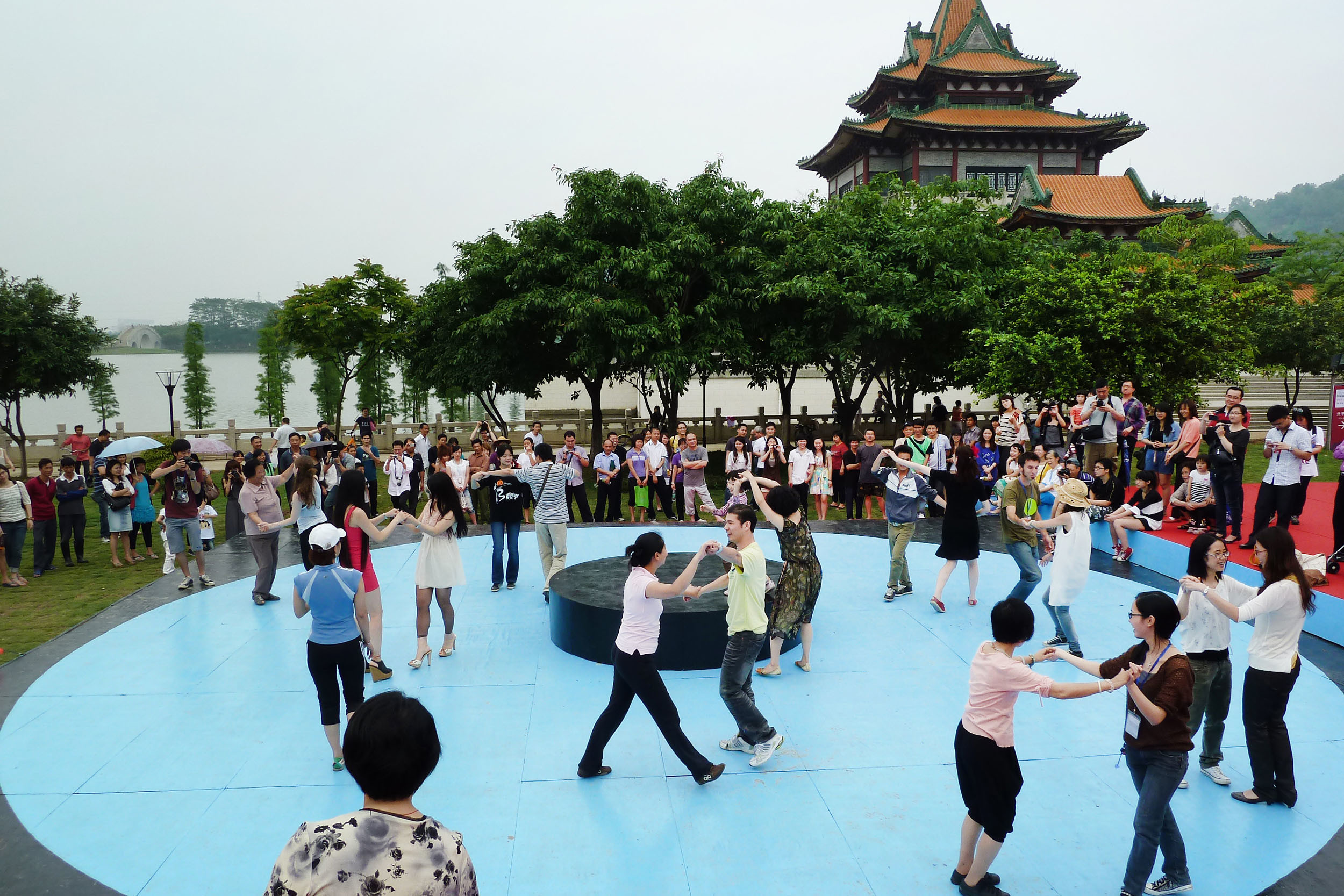
Bruit du frigo is invited to design an installation-exhibition in the public space allowing the organization of a part of the Festival Croisements 2011.
The Shunfeng guinguette is an ephemeral public space inspired by the guinguettes, these popular cabarets, places of leisure born in the Paris region in the 19th century on the banks of the rivers Seine and Marne, where people meet to dance, eat, have a drink and even go swimming.
The Shunfeng guinguette is an invitation to travel as well as a place to party and relax. On the disc-shaped dance floor, you can dance, practice tai chi or Kung fu. One lazes on the undulations of the floor, a reference to the Mascaret, a famous wave prized by surfers in Bordeaux which goes up the Garonne and Dordogne rivers during high tides. Children can roll in the fine sand of the beach.
On the programme of the festival : a mix of contemporary and traditional performances, concerts and DJs …
Finally, installed as a backdrop, an exhibition of the projects realized by Bruit du frigo and two utopian projects that we imagined for the Shunfeng park :
The Garden Interchange
A garden in the shape of a motorway interchange. A footbridge garden, a walkway garden that goes up and down. Under the footbridges, children’s playgrounds, relaxation lounges, picnic areas and all kinds of creative activities. One of the footbridges-garden plunges down to the lake and is divided into lake rooms where families, friends and lovers can find a moment of intimacy and communion with the landscape. At night, these lake rooms shine like fireflies.
The stage for contemplation
A sloping garden in the form of a stadium stand or showcase facing the lake. A stage to watch the sun rise and set. The terraces have lounge chair profiles, canopies provide shelter from the sun. The stand is supported by organic pillars that are shaped like a rock labyrinth and serve as a climbing path.
Last
projects
> all projectsAt the crossroads of art, territories and populations, our approach aims to promote the transition to sustainable, shared and welcoming cities, by proposing alternative ways of imagining and building our living environment and by exploring new forms of public space.


The Secret Balconies # 3 – The Pinède balcony
Montpellier

Common lands trail
Exhibition Nouvelles Saisons, arc en rêve centre d'architecture Bordeaux
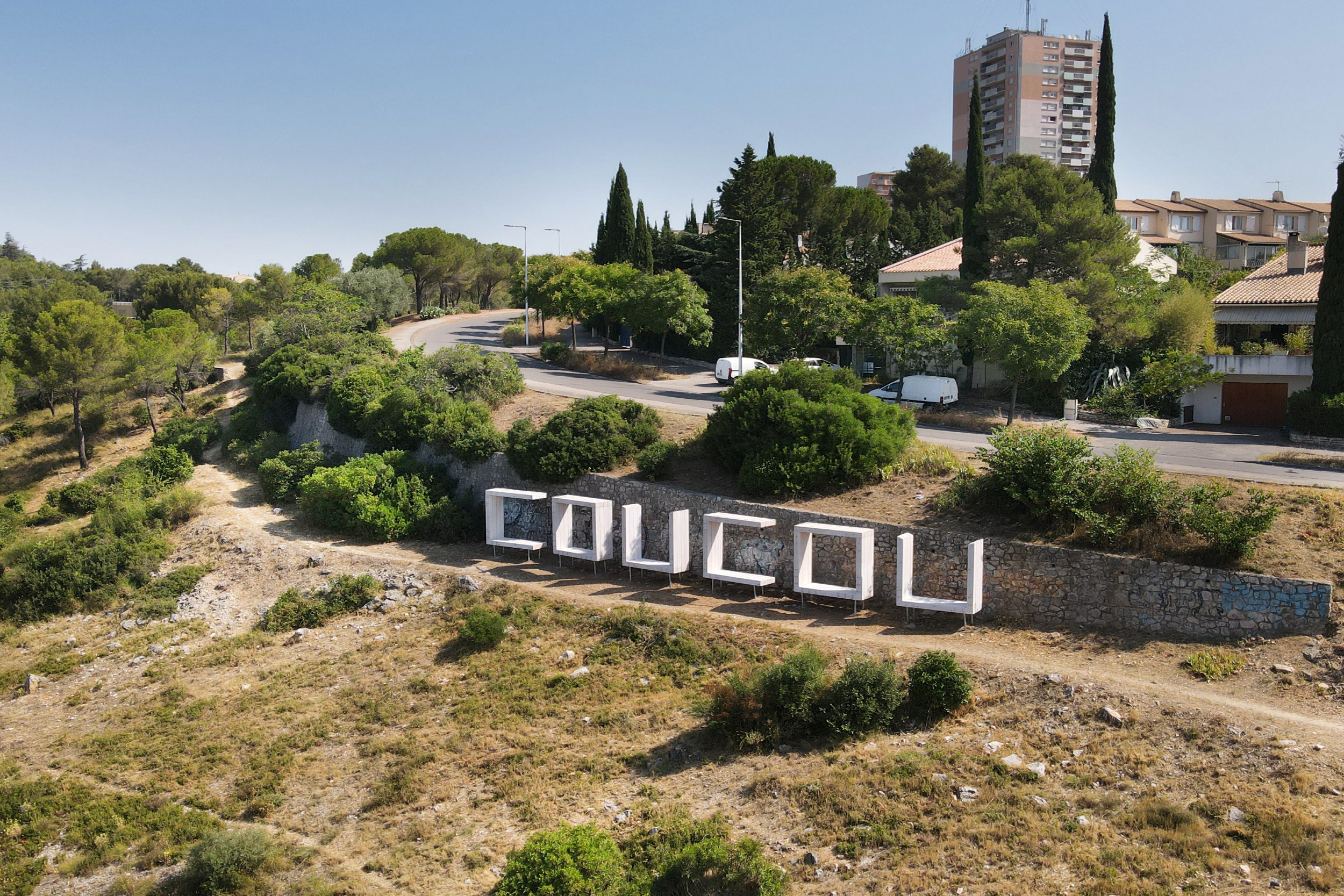
The Secret Balconies # 2 – Balcony des Hauts de Massane
Montpellier

The Secret Balconies # 1 – Balcony Larzac
Montpellier

The Portable Public Spaces
Lyon
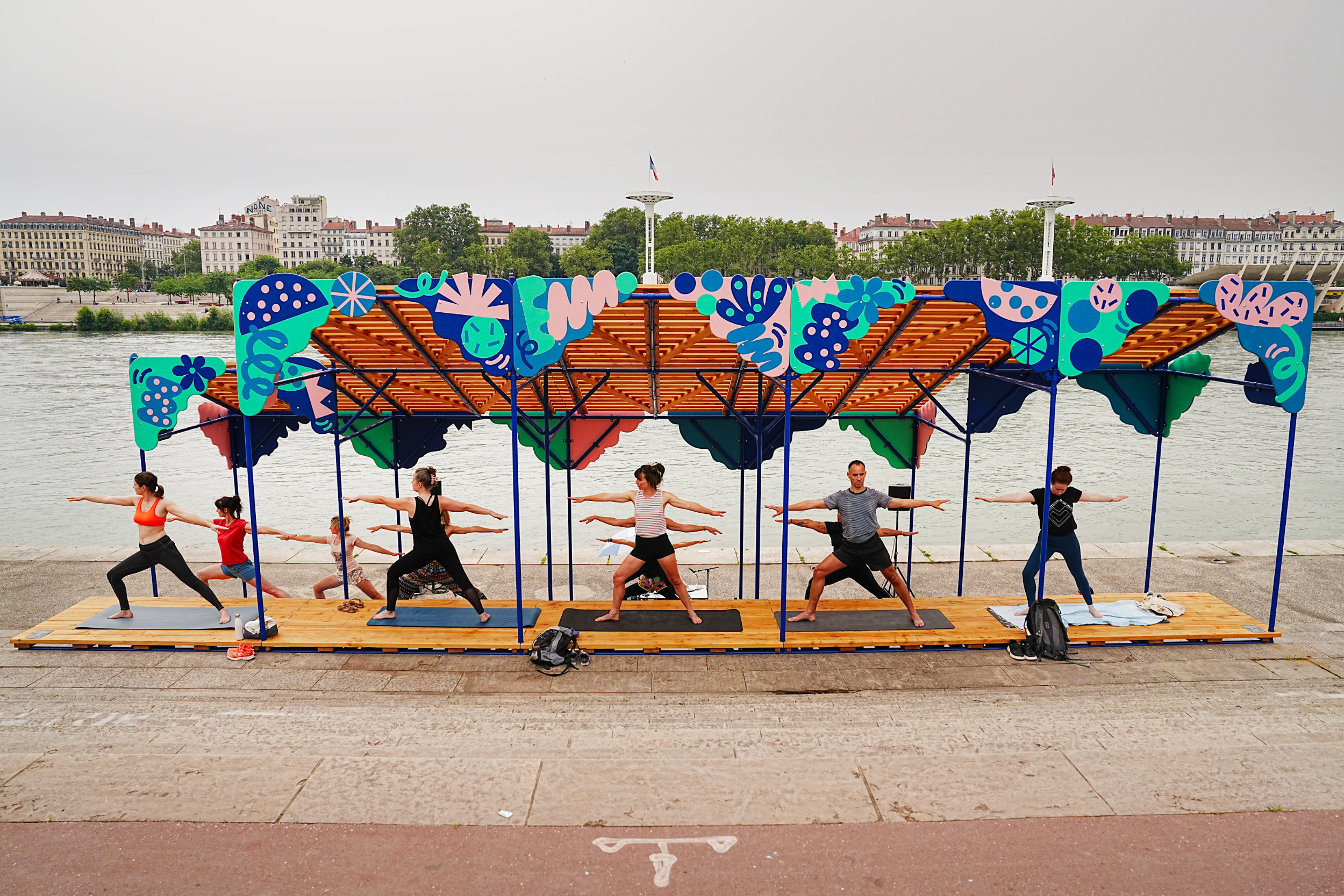
Modular shade canopy
Lyon





